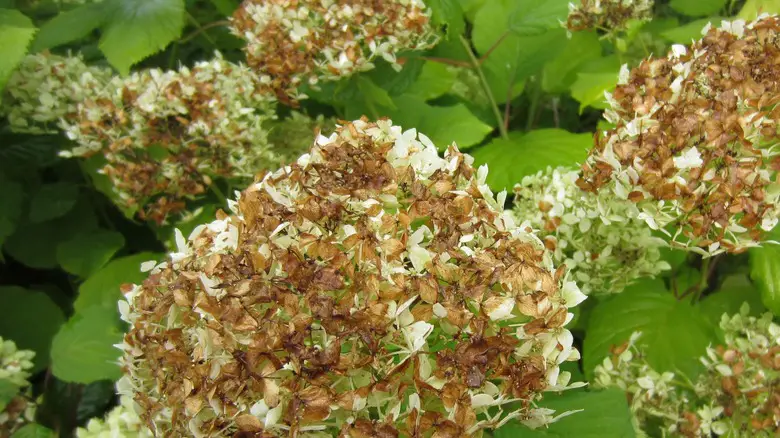Hydrangeas are beloved for their lush, voluminous blooms and vibrant colors. Yet, even the most attentive gardener can face the disheartening sight of drooping, wilted hydrangeas. Whether it’s due to drought, transplant shock, poor soil, or environmental stress, the good news is that hydrangeas are resilient plants that can often be revived with the right care and techniques.
In this guide, you’ll learn how to assess the condition of your hydrangea, understand the reasons behind its decline, and take strategic steps to nurse it back to health.
Understanding Why Hydrangeas Wilt

Common Causes of Hydrangea Decline
Wilting in hydrangeas can stem from a variety of causes, many of which are interconnected. One of the most common issues is lack of water, particularly during hot summer months. When the roots cannot supply enough moisture to support the large leaves and flowers, the plant begins to droop. Conversely, too much water can lead to root rot, where the roots become waterlogged and incapable of absorbing nutrients.
Another frequent culprit is transplant shock. If you’ve recently moved your hydrangea or disturbed its root system, it may need time to adjust. In this case, temporary wilting is a natural reaction to the change in environment.
Poor soil conditions can also contribute to stress. Hydrangeas need rich, well-draining soil to thrive. Clay-heavy or compacted soil restricts root growth and water movement. Nutrient deficiencies, especially in nitrogen, phosphorus, and potassium, can leave plants weakened and vulnerable to disease.
Environmental stressors such as excessive sun, strong winds, frost damage, or pests can all take a toll on a hydrangea’s health. Identifying the specific cause of stress is the first step in reviving your plant.
Assessing the Condition of Your Hydrangea
Checking the Stems and Leaves
Begin by inspecting the overall structure of the plant. If the stems are firm and green when scratched with your fingernail, your hydrangea still has life in it. Wilted leaves are common in stressed plants but do not always indicate irreversible damage. However, if stems are dry, brown, and brittle throughout, the plant may be beyond recovery.
Check the leaves for signs of discoloration, pests, or fungal spots. Leaves that are limp and dull may simply be dehydrated, while yellow or brown leaves can indicate overwatering or nutrient problems. Curling or spotted foliage might suggest pests or disease.
Inspecting the Root System
Carefully dig around the base of the hydrangea and check the root ball. Healthy roots are firm and white. Mushy or foul-smelling roots are signs of rot, often caused by overly saturated soil. If roots appear dry and brittle, your hydrangea may be suffering from dehydration or heat stress.
Watering Techniques to Revive Hydrangeas
Correcting Underwatering
If underwatering is the issue, water your hydrangea deeply and consistently. Aim to keep the soil evenly moist but not soggy. Watering early in the morning helps the plant absorb moisture before the heat of the day sets in. For outdoor hydrangeas, consider applying mulch around the base to retain soil moisture and regulate temperature.
Hydrangeas in containers may require more frequent watering due to faster evaporation. Ensure that pots have proper drainage holes to avoid water accumulation.
Avoiding Overwatering
On the flip side, if your plant has been sitting in waterlogged soil, reduce watering and allow the soil to dry out slightly. Improve drainage by loosening compacted soil or adding organic matter such as compost. For potted plants, repotting with fresh soil may be necessary.
Avoid watering on a fixed schedule and instead monitor the soil’s moisture levels. Stick your finger a few inches into the soil to gauge dampness before each watering session.
Nutrient Management for Recovery
Fertilizing for Growth
Hydrangeas benefit from a balanced fertilizer during the growing season. Use a product formulated for flowering shrubs that includes nitrogen, phosphorus, and potassium. Nitrogen promotes foliage growth, phosphorus supports root and flower development, and potassium aids in overall plant health.
If you suspect a deficiency, perform a soil test to determine which nutrients are lacking. Amend the soil accordingly, but avoid over-fertilizing, which can lead to salt buildup and additional stress.
pH and Flower Color Influence
In addition to nutrients, soil pH can affect hydrangea health and bloom color. Acidic soil promotes blue flowers, while alkaline soil results in pink blooms. If you’re aiming for a specific color or correcting pH-related issues, you can add sulfur to acidify or lime to alkalize the soil. However, changes in pH should be gradual and done with care.
Light and Temperature Considerations
Protecting from Heat and Sun
Hydrangeas prefer morning sun and afternoon shade. Too much direct sun, especially in hot climates, can cause wilting and leaf scorch. If your plant is in full sun, consider transplanting it to a location with partial shade or providing temporary cover with garden fabric during peak heat.
Container-grown hydrangeas can be moved to cooler, shaded spots as needed. During heatwaves, increase watering frequency and check soil moisture daily.
Shielding from Cold Stress
Sudden drops in temperature or frost can damage hydrangea stems and buds. Protect your plant during unexpected cold snaps by covering it with frost cloth or burlap. In colder zones, apply a thick layer of mulch in late fall to insulate roots during winter.
If your hydrangea suffers from winter dieback, prune back dead stems in early spring when new growth begins to appear.
Pruning to Promote Recovery
Removing Damaged Growth
Prune away any dead, diseased, or damaged stems to help the plant focus energy on new growth. Use sharp, clean pruning shears to make clean cuts above healthy buds or nodes. Remove only what’s necessary to avoid further stress.
For hydrangeas that bloom on new wood, pruning in late winter or early spring encourages vigorous blooming. For those that bloom on old wood, prune immediately after flowering to avoid removing next year’s buds.
Shaping and Supporting the Plant
Light pruning can also help reshape the plant and improve air circulation. Thinning out crowded branches reduces the risk of fungal diseases and improves light penetration to inner leaves and buds. If stems are drooping, staking may help keep the plant upright while it recovers.
Transplanting or Repotting if Necessary
When to Transplant
If poor location or soil is contributing to hydrangea decline, consider transplanting it. The best time to move a hydrangea is during early spring or fall, when temperatures are mild and the plant is not actively blooming.
Before transplanting, prepare a new hole with enriched, well-draining soil. Water thoroughly after moving the plant and monitor for signs of transplant shock, such as temporary wilting or slow growth.
Repotting Container Hydrangeas
Container hydrangeas can become root-bound over time, leading to stress and nutrient deficiency. Repot the plant into a larger container with fresh potting mix if roots are circling the pot or poking out of drainage holes.
After repotting, water deeply and place the container in a shaded area until the plant shows signs of recovery.
Encouraging Bloom Revival
Restoring Flower Production
Once your hydrangea’s health has been stabilized, focus on encouraging it to bloom again. In addition to proper watering and feeding, deadheading spent flowers helps redirect energy to new buds. Maintain consistent care throughout the growing season to support strong flower development.
Adjusting Care Seasonally
Hydrangeas require different care throughout the year. Spring and summer call for fertilization and moisture management. In fall, reduce watering slightly and prepare the plant for dormancy. Winter is a time for protection rather than active growth. Understanding this seasonal rhythm is key to long-term success.
Frequently Asked Questions
What causes hydrangeas to wilt suddenly?
Hydrangeas can wilt suddenly due to lack of water, excessive heat, or root disturbance. In hot weather, water loss through the large leaves may exceed the plant’s ability to absorb moisture, causing wilting even after a single dry day. In other cases, transplant shock or damaged roots from pests or overwatering may lead to sudden decline.
How do I know if my hydrangea is still alive?
Check the stems by gently scratching the bark with your fingernail. If the inside is green, the plant is still alive. Also look at the base of the plant for any signs of new growth. Dry, brittle stems with no green inside likely indicate dead tissue, but even in severe cases, root systems may still be viable.
Can overwatered hydrangeas recover?
Yes, overwatered hydrangeas can recover if root rot hasn’t progressed too far. Improve drainage, reduce watering, and allow the soil to partially dry between waterings. If the roots are severely damaged, you may need to trim rotten portions and repot the plant in fresh soil with better aeration.
How long does it take to revive a wilted hydrangea?
Recovery time depends on the cause and severity of damage. Mild dehydration can be reversed within hours or days with deep watering. More serious stress such as root damage or transplant shock may take several weeks for the plant to bounce back and begin growing again.
Should I prune dead flowers and leaves when reviving hydrangeas?
Yes, deadheading spent blooms and removing damaged or diseased leaves helps redirect the plant’s energy into new growth. Be sure to prune above a healthy bud and avoid cutting into green stems if your hydrangea blooms on old wood.
Can I revive a hydrangea that was planted in the wrong spot?
If a hydrangea is struggling due to too much sun, poor drainage, or wind exposure, relocating it can help. Transplant during early spring or fall for best results, and prepare the new location with nutrient-rich, well-draining soil and appropriate light conditions.
Conclusion
Reviving a wilted hydrangea is not only possible but deeply rewarding. With careful attention to watering, soil quality, nutrients, and environmental factors, you can restore your hydrangea’s health and bring back its iconic blooms. Whether you’re rescuing a garden favorite or a potted beauty, patience and consistency are your best tools. By following the strategies in this guide, you’ll be well on your way to enjoying a vibrant, blooming hydrangea once again.






